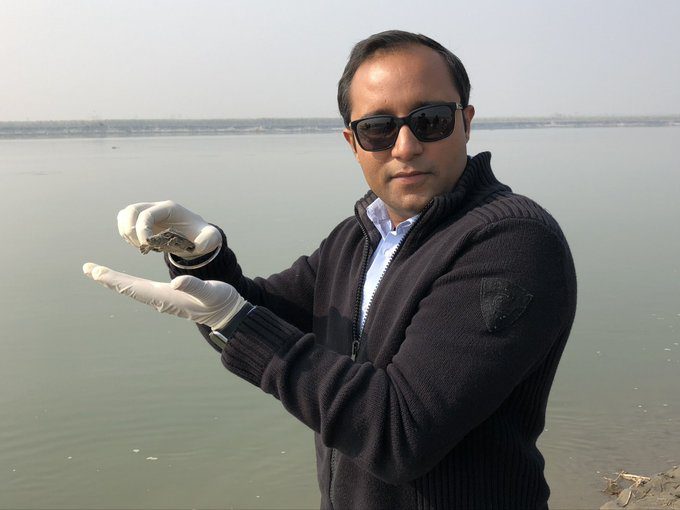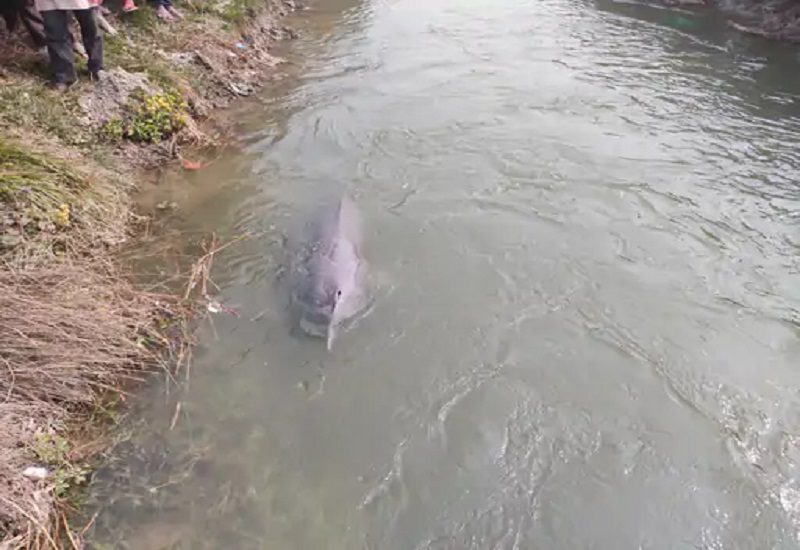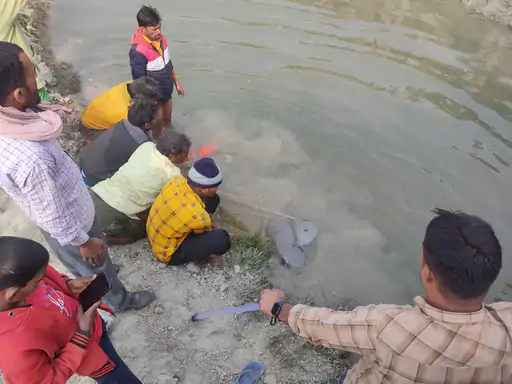Sighting of a Dolphin in a canal in Pratapgarh district in Uttar Pradesh attracted a large crowd. Many couldn’t recognize it. Those who did, wondered how did dolphin reach there?
After an arduous operation lasting over 24 hours, a rescue team from Lucknow under the leadership of Wildlife Biologist Dr. Shailendra Singh, saved the beautiful female Gangetic Dolphin. But this was not the first such case. Earlier, dolphins have been found in small water streams from UP to Bihar and other states in recent times. That is why the question arises that why dolphins are going to smaller streams?
Speaking to Indian Masterminds about the phenomenon 2016-batch IFS officer Akash Deep Badhawan, posted as DFO, Katarniaghat Wildlife Sanctuary (KWS) said, “Gangetic Dolphin lives in the Ganges and related rivers of South Asia. It is a very shy creature and can hold its breath for 15 minutes. Dolphins can swim as fast as 60 km per hour. It sleeps with one eye closed. It can live as long as human do. Generally blind, they catch their prey by emitting ultrasonic sound to gauge the distance, mass etc. There are many more such mesmerizing characteristic of Gangetic Dolphins, but they are endangered due to many reasons.”

UPSTREAM TO DOWNSTREAM
Though the government is running several campaigns for the conservation of the Gangetic Dolphin, construction of National Waterway in Ganga is proving fatal for then. In a bid to save the rare freshwater species from extinction the centre in 2010, declared Dolphin the national aquatic animal.
Mr. Badhawan said, “Dolphins keep moving to 10-12 feet deep water streams where the fish population is good.Mostly Dolphins swim downstream. Sometime they land in shallow waters where they start experiencing breathing problems “

Though there is no major impact on their life cycle, they need to be protected from a number of threats, including water pollution, excessive drainage, illegal hunting and dams and barrages that slow the flow of the river, which results in large-scale loss of their habitat.
BARRIERS
At present there are about 3200 dolphins in the Ganges. They are about9 to 10 feet long. “But larger water streams are better for dolphins because there are fewer barriers. Small water streams are a risk because of risk of being spotted and hunted. Dolphins are very shy creatures, so even a small disturbance affects them,” Mr Badhawan said.

CRUISE TOURISM
The government declared Ganges Dolphin as a protected species in the 1990s. Although their number in the Ganges has increased in recent years, they are threatened by killing and habitat fragmentation. Mr RK Sinha, known as Dolphin Man due to his conservation efforts for Dolphins, said that cruise tourism could impact dolphin population.

Saved this beautiful female gangetic dolphin, which strayed in a canal, after an onerous operation of 24 hours in Pratapgarh UP! This marks the 25th successful rescue of dolphin in UP @cleanganganmcg @UpforestUp @moefcc pic.twitter.com/Dq3HRMimTt
— Shailendra Singh PhD (@Rivertiger85) January 22, 2023

































